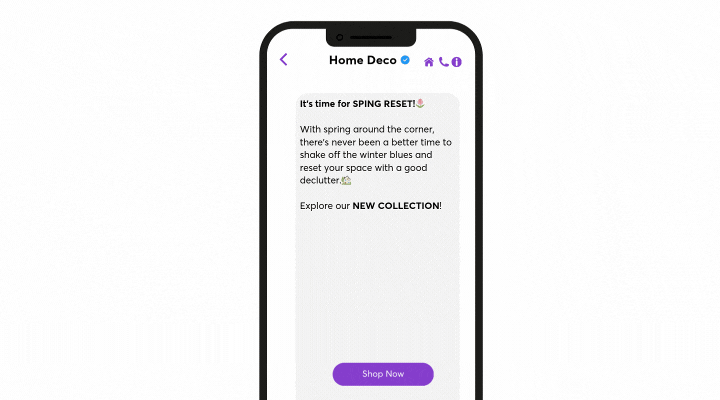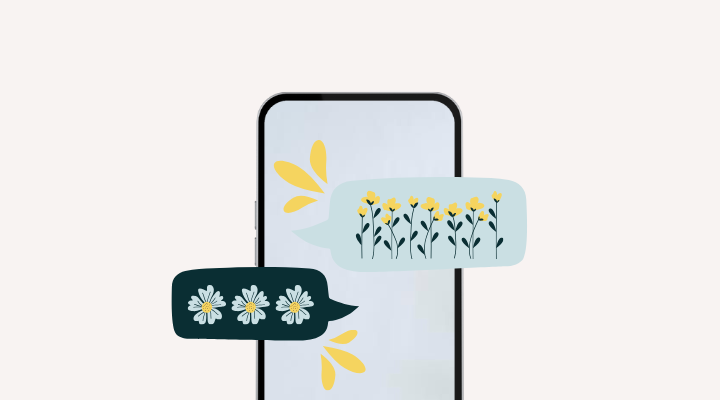What was effective in winter may not have the same impact in spring, and a summer campaign that boosted sales might require an update in the fall.
To stay ahead of the competition, it’s important to do more than just send messages; you must adapt them intelligently to meet the evolving needs and desires of your audience.
In this article, we’ll share effective strategies to keep your seasonal campaigns engaging, relevant, and aligned with each period’s unique momentum.
Leverage seasonal moments
Seasonality presents a great opportunity to capture your audience’s attention. By aligning your campaigns with holidays, special occasions, or seasonal transitions, you can tap into customers’ heightened emotions and enthusiasm.
Spring Campaign Ideas to Inspire You:
- International Women’s Day
- Carnival & Mardi Gras
- First Day of Spring
- Easter
- Mother’s Day
Create personalized offers that match the season.

For instance, offer exclusive discounts on spring-related products or run limited-time “Welcome Spring” promotions. By tailoring your messages to customer needs—such as spring refreshes or Easter getaway planning—you make your communication more timely, relevant, and effective.
Personalize your messaging
Mass messaging with a generic approach doesn’t drive results.
Understanding what truly matters to your audience is key to encouraging conversions. Use first-party customer data to personalize your communications.
Example:
- If a customer recently purchased gardening products, send them spring garden organization tips along with related product recommendations.
- This makes your message feel helpful rather than purely promotional.
Engage with interactive content
Interactive content keeps your audience engaged while offering them a fun experience.
Try:
- Polls
- Short quizzes
- Customer satisfaction surveys
Pro Tip: Encourage participation by offering a small incentive, like a discount or giveaway entry.
Send messages at the right time
The effectiveness of your message depends not just on what you say, but when you say it.
- Sending Easter promotions too early may result in disinterest.
- Sending them too late means missing the momentum.
Use automated reminders or real-time email triggers based on customer behavior to optimize timing.
SMS, Viber & Email Marketing: The best days and times to send a campaign.
Write strong subject lines
A successful email starts with a subject line that grabs the attention of your recipients. Customers’ inboxes are crowded, so your subject must stand out. It is important to convey a sense of urgency, to arouse curiosity, or to promote a sense of exclusivity to motivate the recipient to open the message.
Examples:
“Spring Deals—Limited Time Only!”
“Welcome Spring with Fresh Arrivals”
“Be the First to See What’s New”
Use a multi-channel strategy
To keep your campaigns engaging, it’s important to reach your audience across multiple channels. By combining different messaging channels, you can achieve broader coverage.
For instance, you can start by sending a teaser email about a limited-time offer and then follow up with a reminder SMS. This multi-channel approach helps maintain audience engagement across various touchpoints and increases the likelihood of conversion.
Create a sense of exclusivity
Customers love feeling special! Exclusive offers enhance loyalty and conversions. By fostering a sense of access to something unique, you can elevate the value of your message.
For instance, you might use phrases like "Spring Discount—Exclusive to Our Subscribers!" or "Be the First to Explore Our Spring Collection."
By instilling this sense of exclusivity, you make customers feel valued, which increases the likelihood of them engaging with your offer.
The key to effective seasonal campaigns is to continuously offer value to your customers and remain flexible and adaptable to their needs and wishes.


